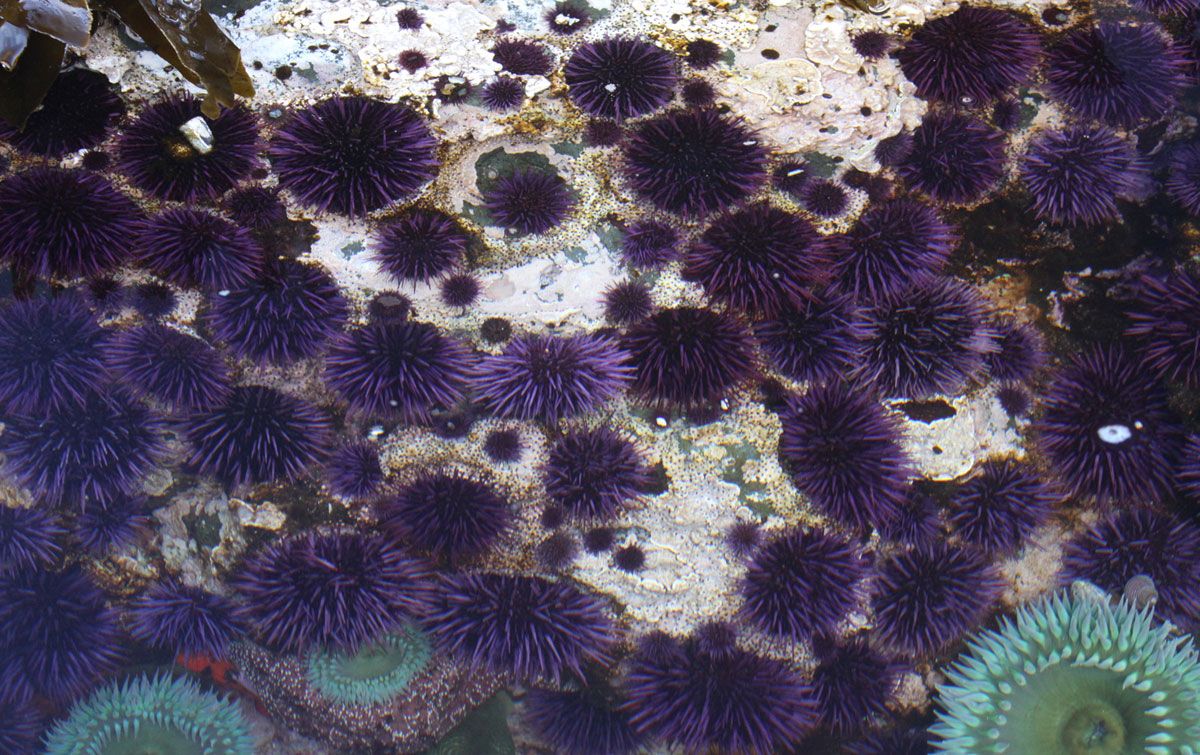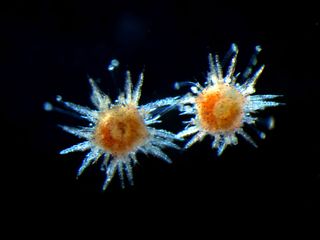Odd Creature Evolves in a Flash to Survive Climate Change

Mushrooming carbon-dioxide levels are leading to caustic ocean conditions, but some species, like the purple sea urchin, have the ability to adapt to this changing environment, a new study shows.
Researchers grew purple sea urchins (Strongylocentrotus purpuratus) — which are echinoderms (a group that also includes sea stars and brittle stars) with spiky protrusions made of calcium carbonate — in the lab. The invertebrates were grown under conditions mimicking expected future levels of the greenhouse gas carbon dioxide.
In response to high carbon dioxide levels, the urchins showed substantial changes in genes involved in regulating their cells' pH (the degree of acidity) and skeletal development.
The oceans are expected to become increasingly acidic this century as carbon dioxide gets pumped into the atmosphere and, ultimately, the seas. The acidity is particularly problematic for organisms that must create shells from calcium carbonate, because the shells are more likely to dissolve under acidic conditions. [Gallery: Stunning Images of Sea Urchins]
"The big unanswered question is, if and how marine organisms will be able to respond to ocean acidification," said Melissa Pespeni, an evolutionary biologist at Indiana University and lead author of the study, published today (April 8) in the journal Proceedings of the National Academy of Sciences.
Pespeni and her colleagues bred adult sea urchins, collected from the Pacific Ocean between central Oregon and Southern California, and raised their larvae in tanks exposed to regular carbon-dioxide levels or elevated levels of carbon dioxide forecasted to occur as a result of climate change. The scientists measured the growth and genetic variation of the urchin larvae during their first week of development, a time when the larvae are still free-swimming blobs undergoing major skeletal growth.
The immature urchins showed few visible changes in growth and development, but there were noticeable genetic changes in certain genes. The urchins exposed to higher carbon-dioxide levels showed changes in genes involved in promoting growth, producing minerals and keeping pH within a range that's tolerable to them. In comparison, the urchins exposed to current carbon-dioxide levels showed only random genetic variation.
Sign up for the Live Science daily newsletter now
Get the world’s most fascinating discoveries delivered straight to your inbox.

The findings demonstrate that the high-carbon-dioxide environment was exerting natural selection on the urchin larvae: Only the "fittest" — those with the most advantageous genes — survived. It was exciting to see that the urchins could adapt, Pespeni told LiveScience.
"If any organism were able to adapt and evolve, it would be the purple sea urchin, because they live in an environment where they're experiencing daily and seasonal changes in pH," she said.
The urchins are very long-lived and have more genetic variability than most other species — including humans, she added. Consequently, the urchins have a broad arsenal for responding to changes in their environment. The findings give scientists hope that organisms like the purple sea urchin might be able to adapt to rising carbon-dioxide levels, but it's unclear whether other organisms will be so flexible.
Moreover, increasing levels of greenhouse gases is just one of many changes associated with climate change. It would be interesting, Pespeni said, to find out how the urchins would adapt to multiple stressors, such as temperature, acidity and food availability.
While some species may be able to adapt to climate change, this requires large, genetically varied populations of animals, Pespeni and her colleagues stressed.
Editor's Note: This article was updated at 9:43 a.m. Eastern Time on April 10 to clarify the genetic changes that took place and the requirements for adaptation.
Follow Tanya Lewis on Twitter and Google+. Follow us @livescience, Facebook & Google+. Original article on Live Science.












